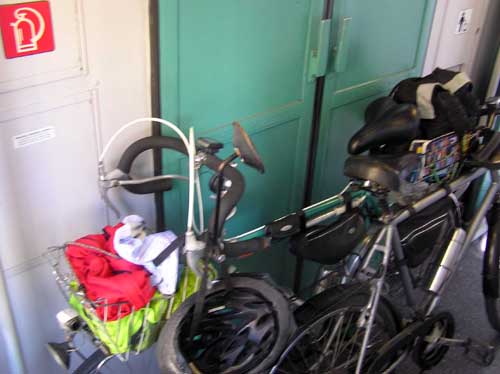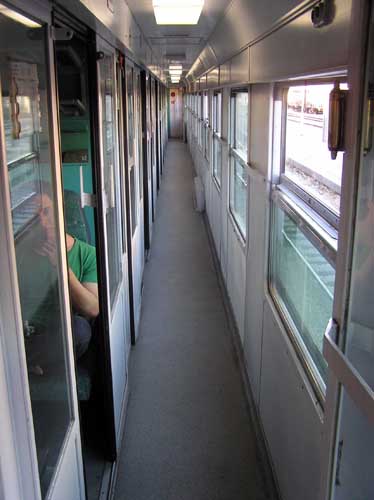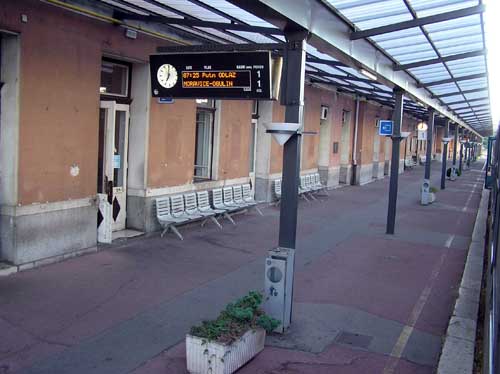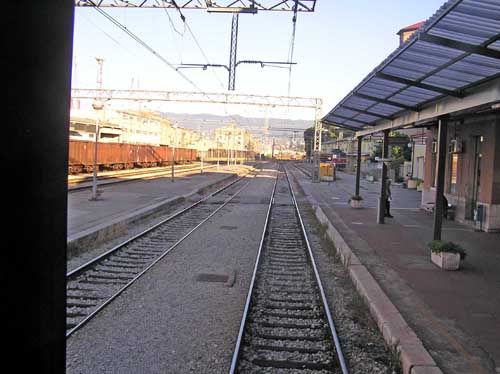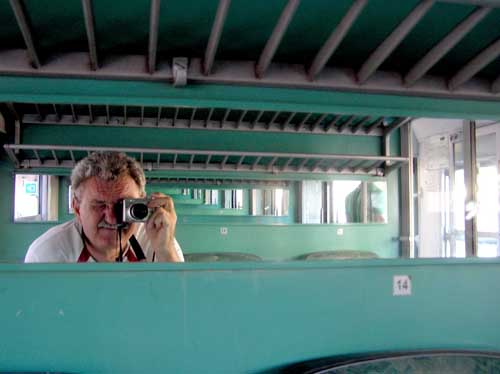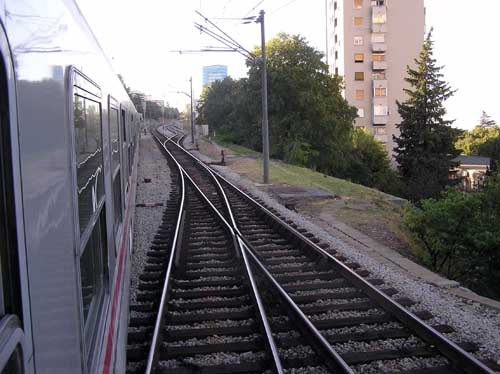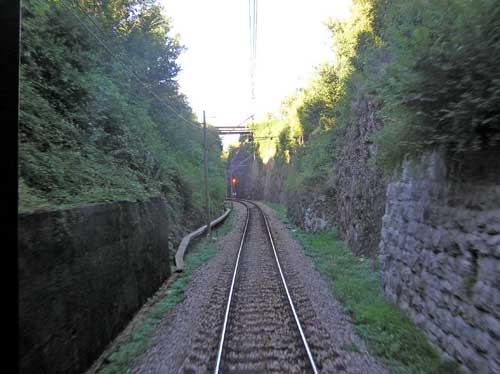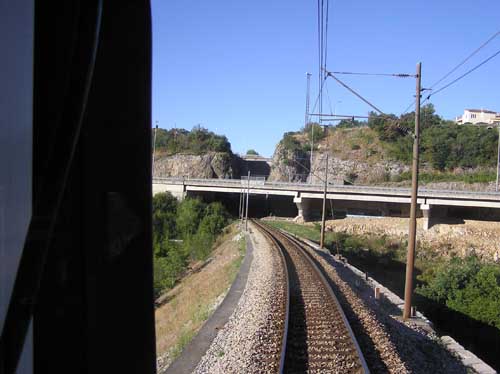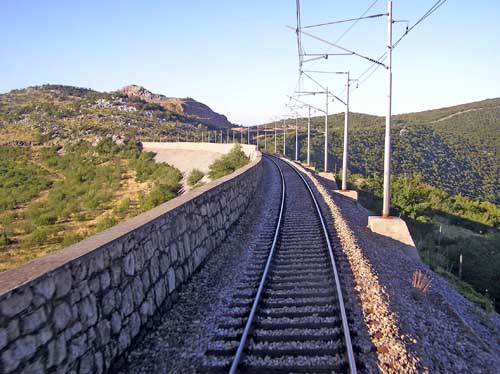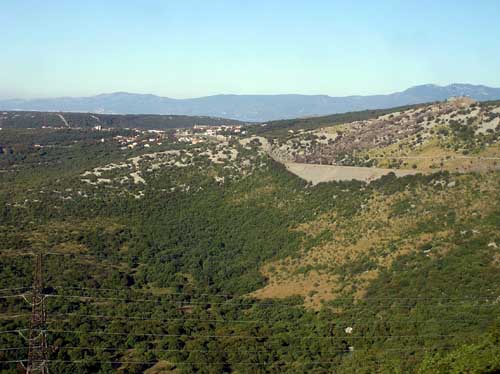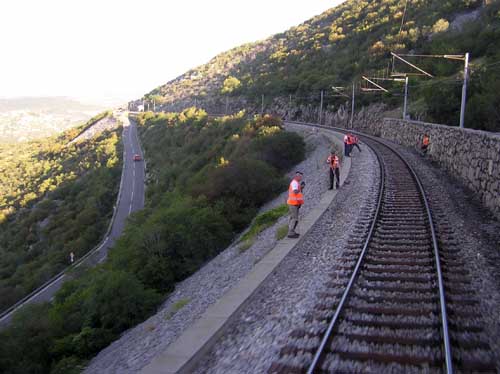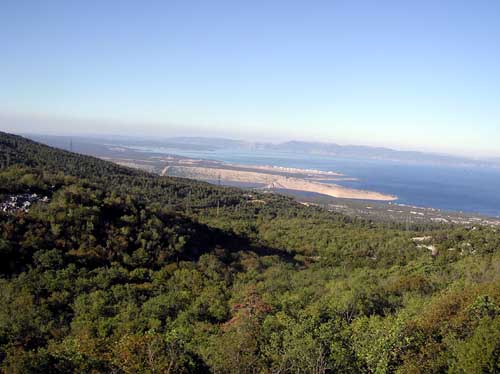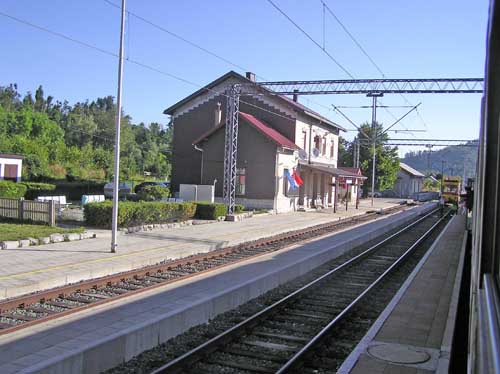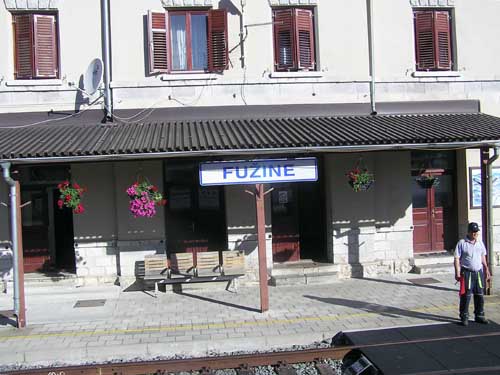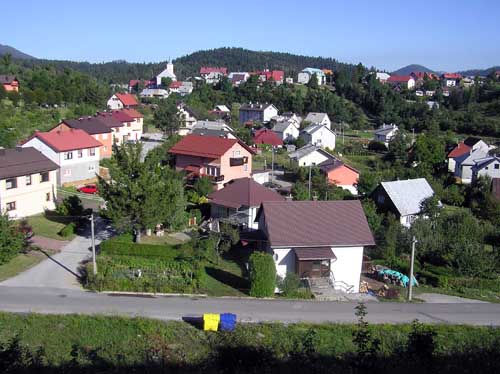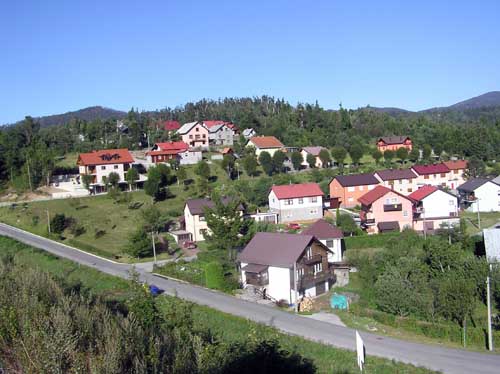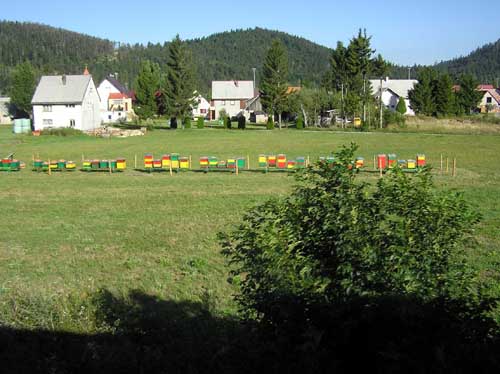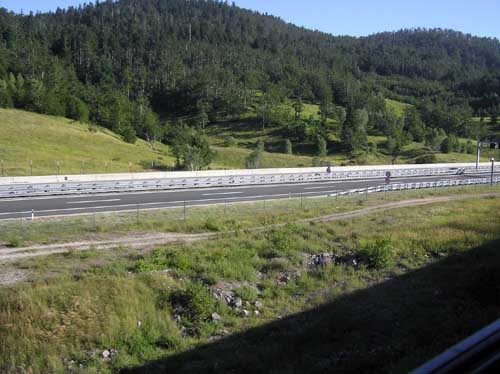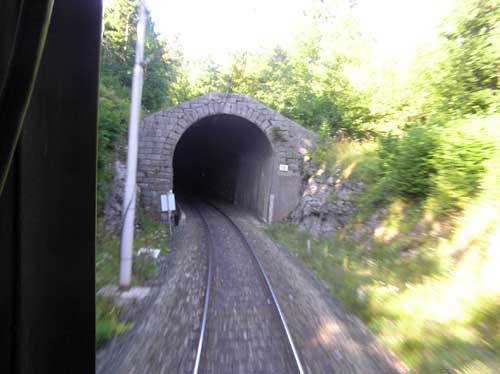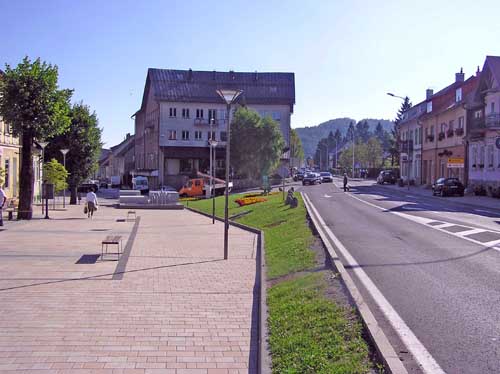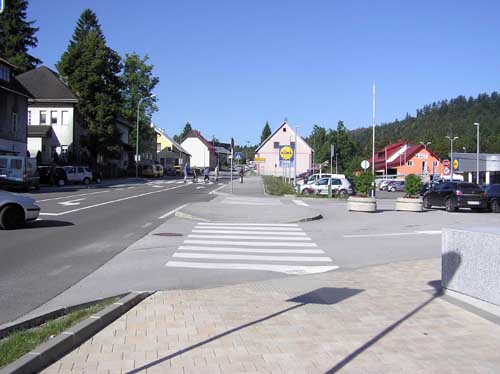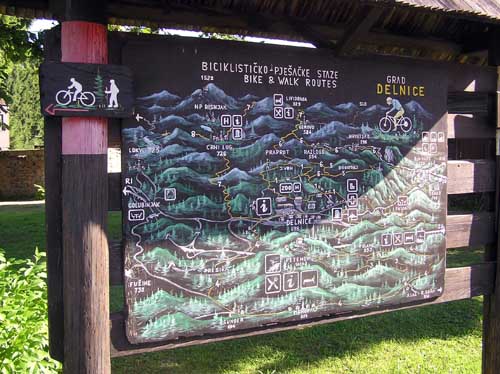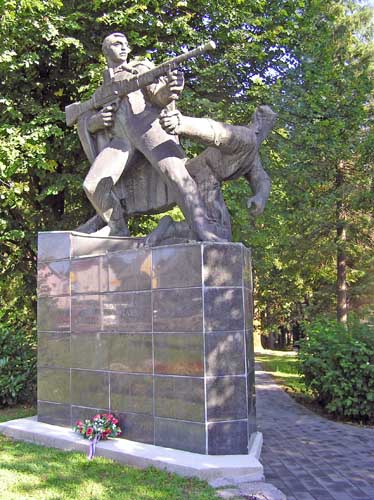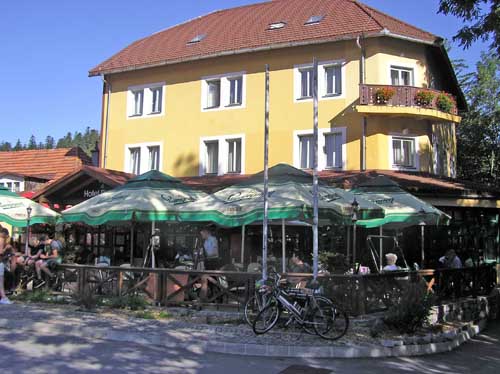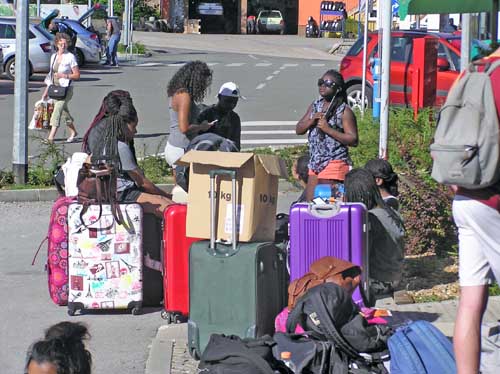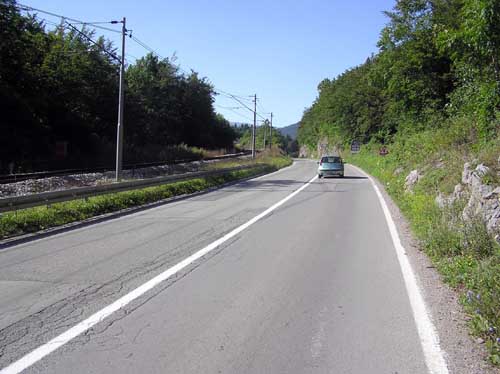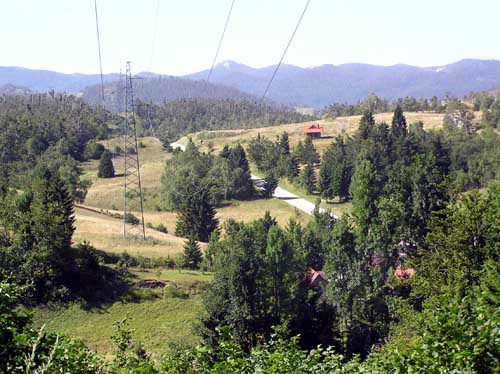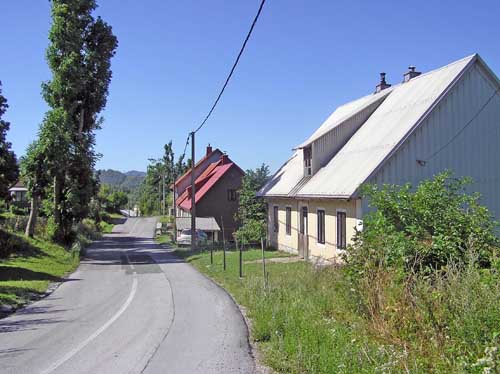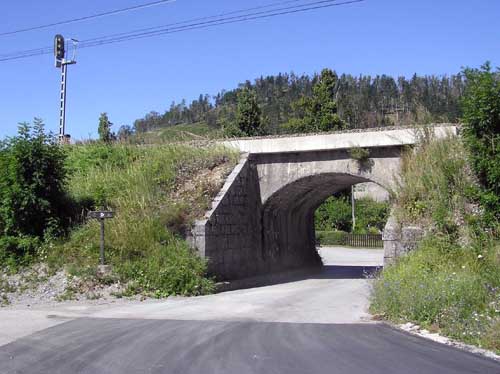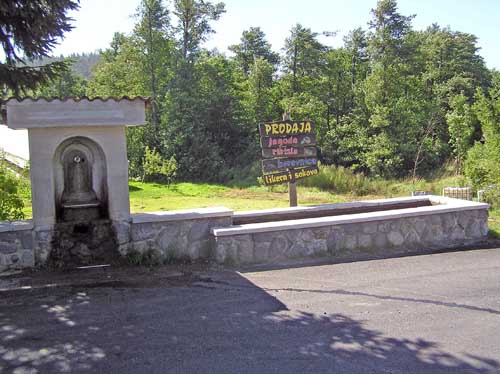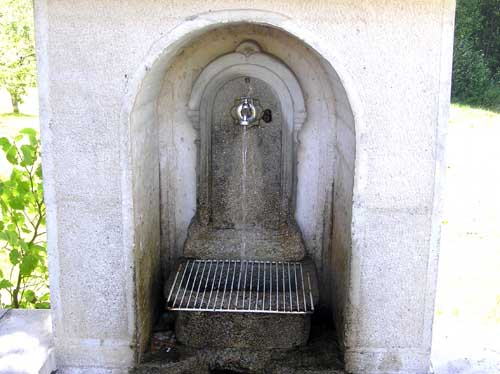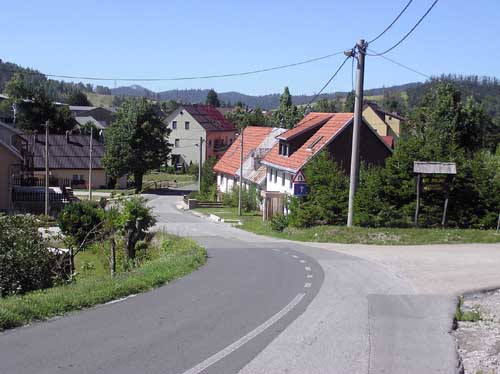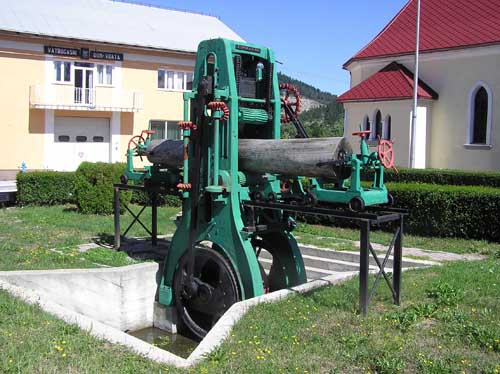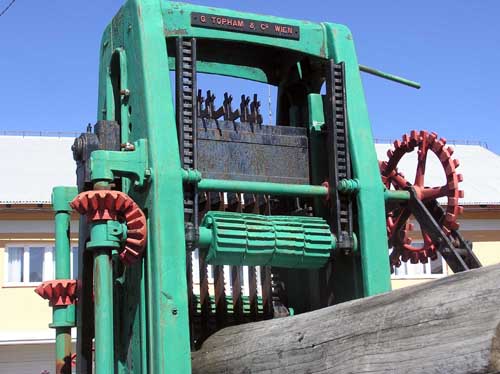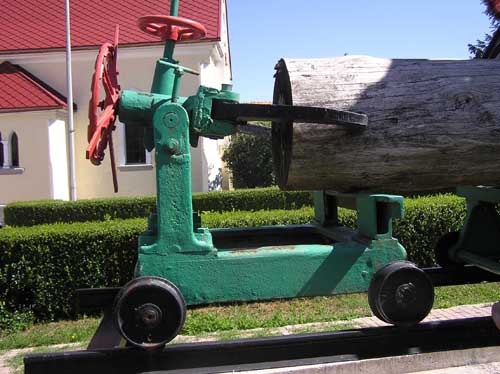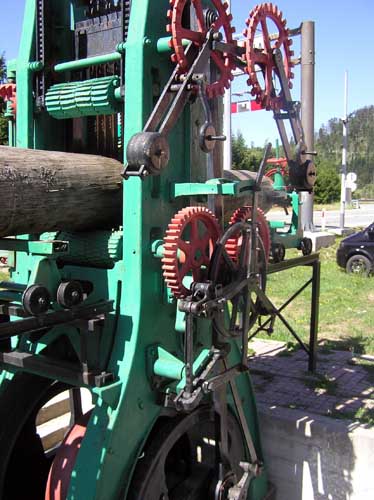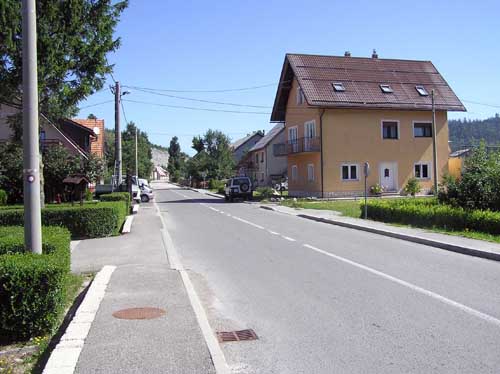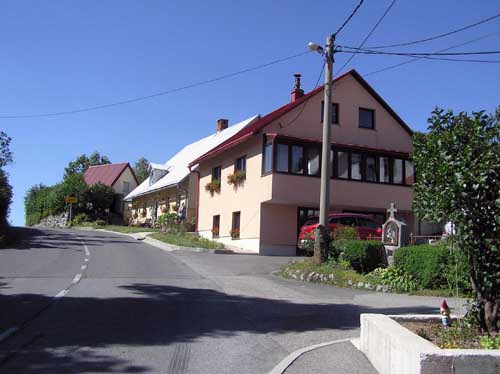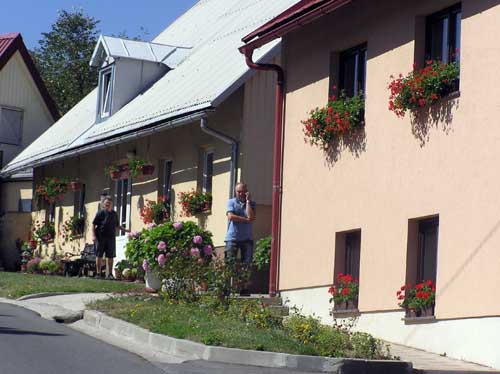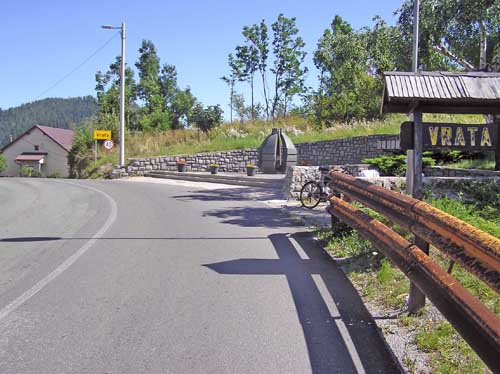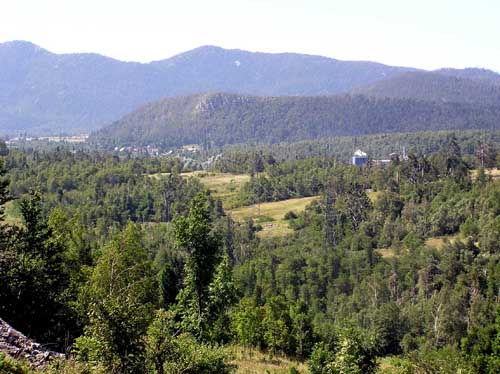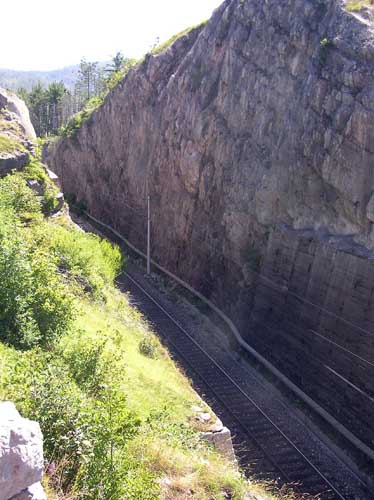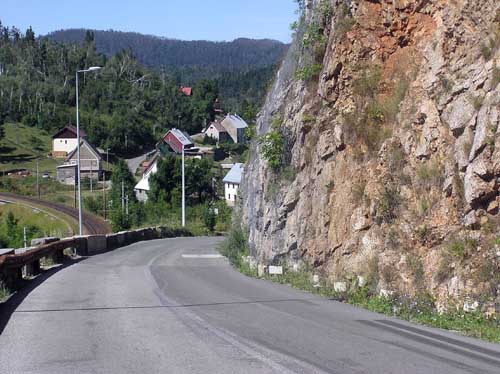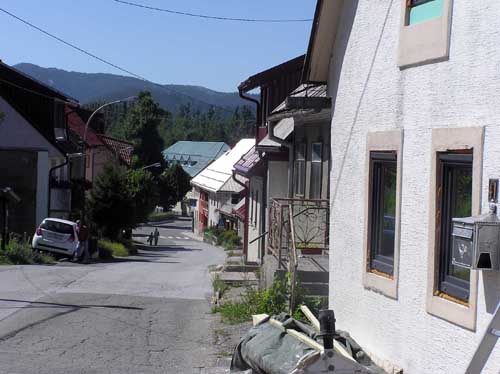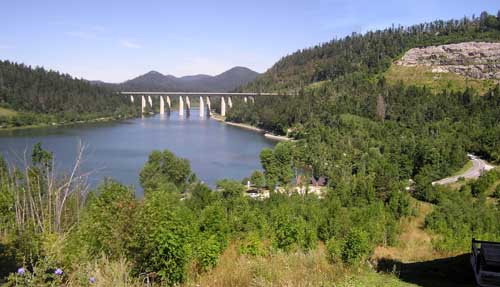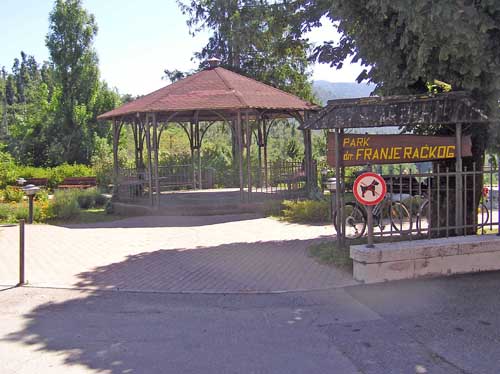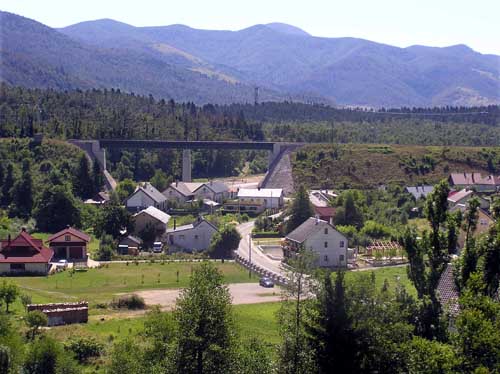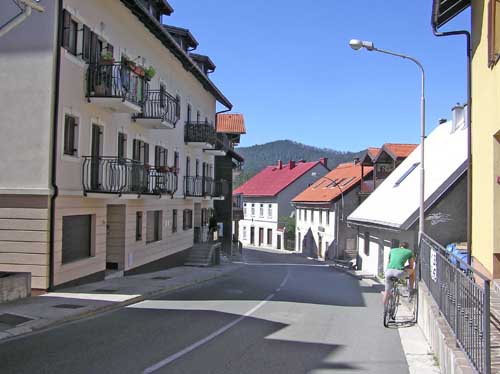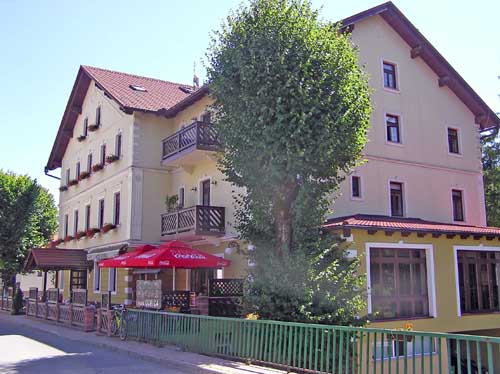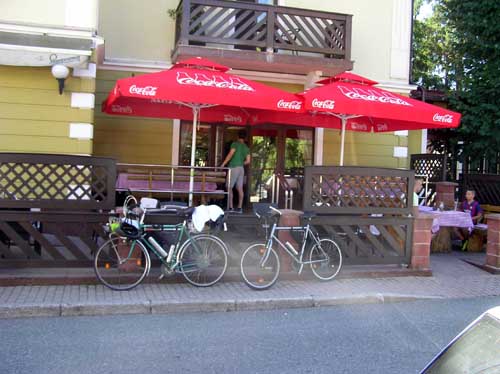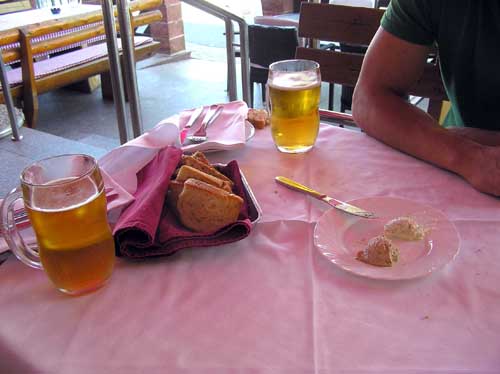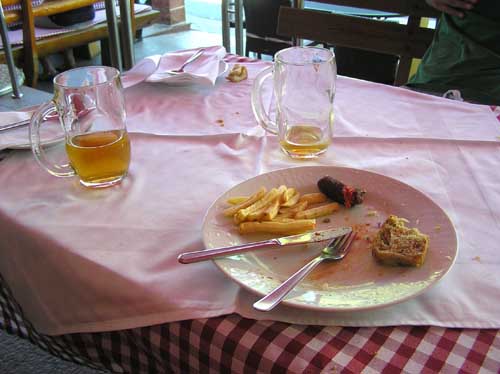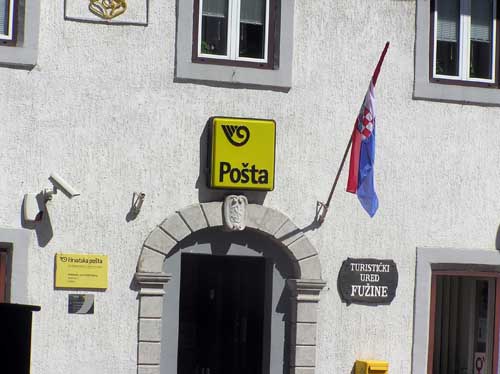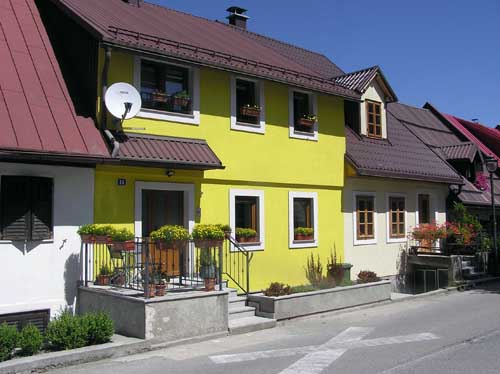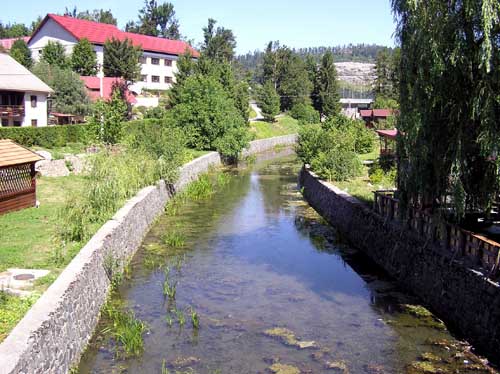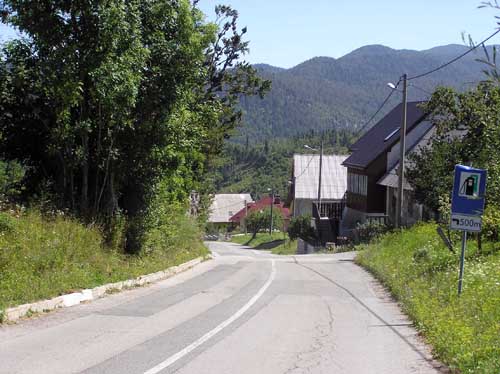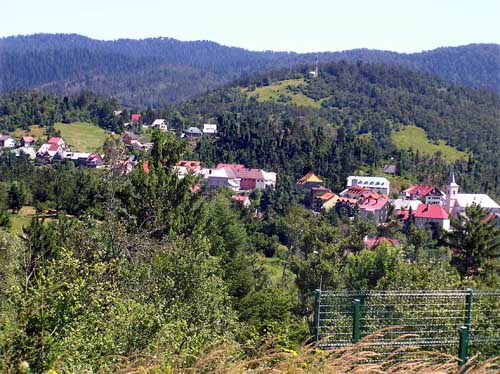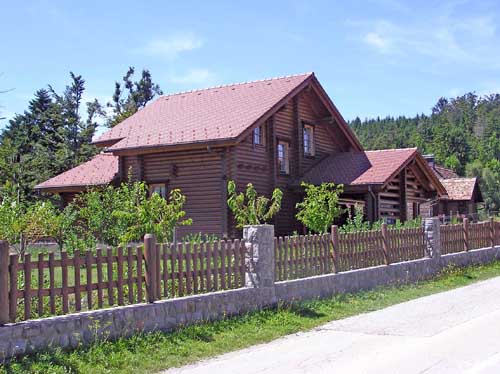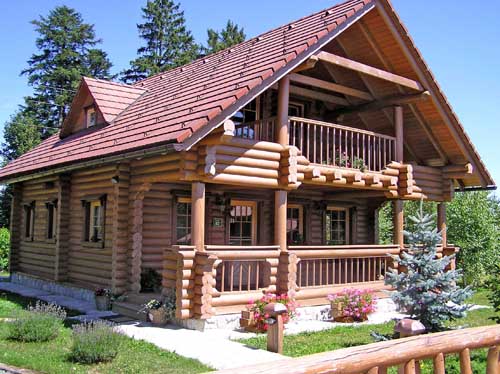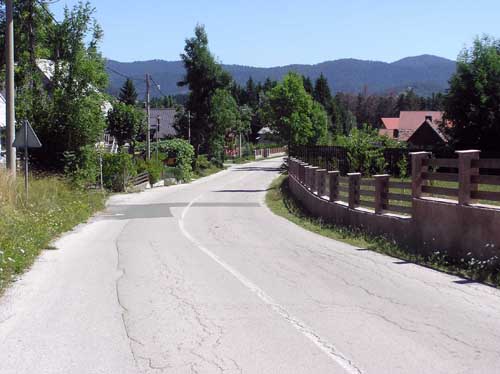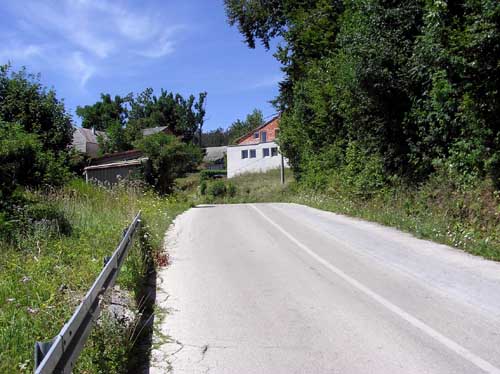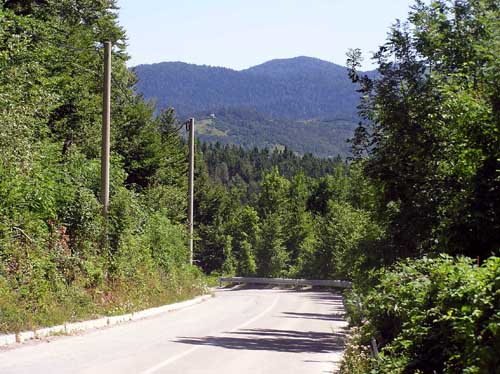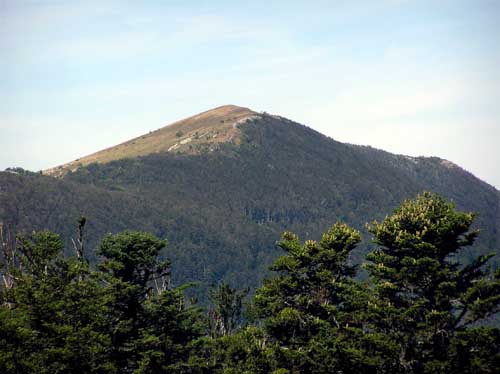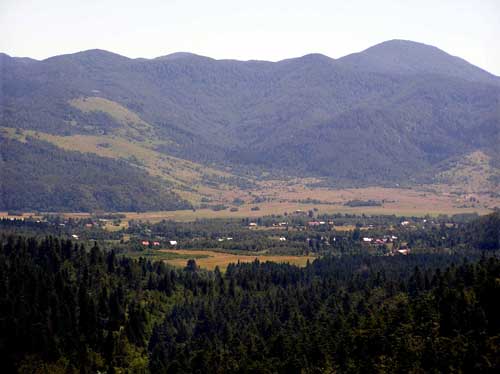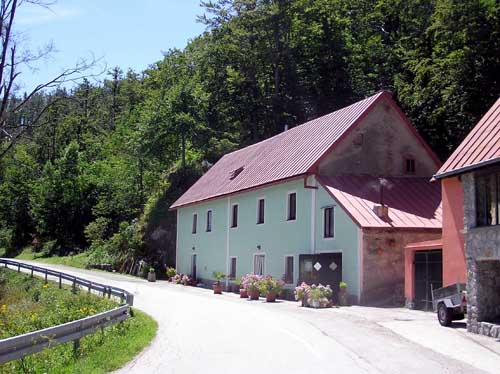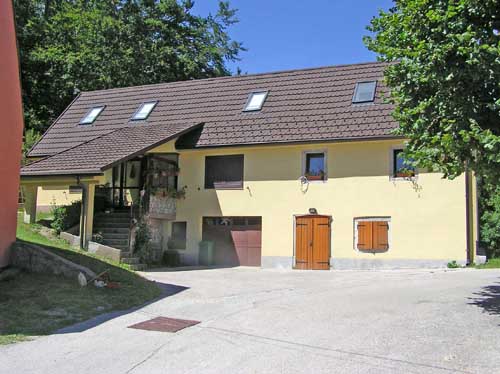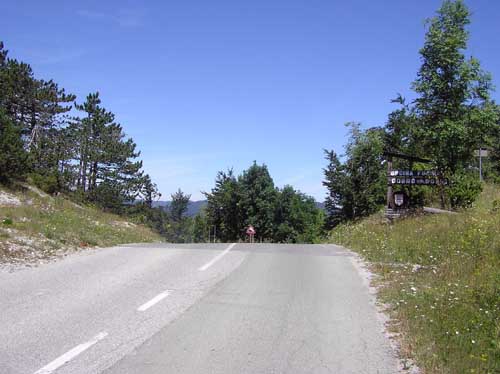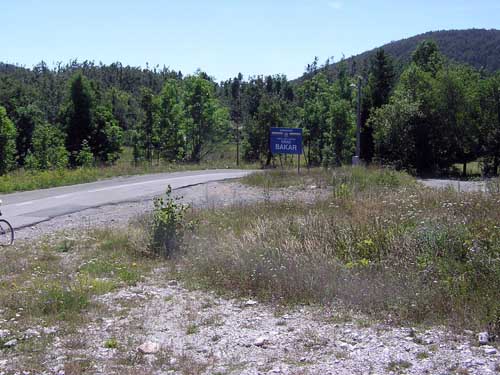Pero and his bike
ponedjeljak, 20.05.2019.
Caroline 2016 - Part One
If you don't want to read, skip the text and see the images here.
You can see the map of this journey here (Google Maps), or here (Bikemap).
The idea came by herself.
Having spent summer holidays in the Rijeka city, swimming on the southeast beach of the city, the thinking of exploiting something that is "so much in such a small space" has appeared. On the one hand is the smell of the Mediterranean, here with the saltwater blue water at zero meters above sea level, and on the other side only 40 km away, and at a higher altitude, a completely different mountain climate.
Nowhere, I guess, they are not as close as here, Switzerland and the Cote d'Azur.
The railroad makes them even closer. So I decided for a day to see how this compound looks.I traveled this 40 km by train and at the same time climbed 700 meters above the sea, and returned by bike back where I started.
And I did not do it alone. My son was my companion. So, the real parenting idyll, I do what I love, and I do it with my son.
The departure of the train was about 7.30 am, so we were in it at 7 am. We can only dream about the special bicycle place on the train, so we've placed them in the rear wagon in front of those middle doors which used for moving from the wagon to the wagon.
In the wagon was a standard "crowd" on the Croatian Railways, so beside us, in the other compartments were a few passengers.
At the Rijeka railway station was not a lot of crowds too.
If they were a bit taller, our bikes could see the situation behind the train through the window at the central door.
In the impatient expectation of the beginning of the journey, I made my self-portrait in the mirrors above the seat.
And then the traffic man with the red cap blew in the whistle decisively and lifted the stick. A moment later, the train started out obediently. After leaving the station and crossing the road, the railroad started off with an impressive uphill that was not a problem for a powerful electric locomotive.
Still, on the uphill, the train began to pass through the canyons, specially made for it.
In addition to the canyons, there were also the embankments by which the train traveled. As these embankments are on the windward, and as this area is transformed easily from a paradise into the hell, considering the wind, there are often stone/concrete wind defenders on these embankments.
The wind defenders on the left side of the railway
It is interesting how the hinterland of the Rijeka city, a little deeper, is, in fact, a deserted area. Just stunted greenery in a mixture with rocks.
The gray, retaining wall of the railroad, which we just passed, looks like as something that disturbs the symbiosis of that greenery and rocks.
After when the train passed the road crossing of the road to Crikvenica town, the workers who were working on the track maintenance, they moved aside while the train passed.
It was impressive to look down below how much the train climbed to the altitude. As in the palm, we saw the blue sea together with the Kvarner islands and the bridge to the island Krk.
Then we got caught up in some tunnels, bends, embankments, as a sign that we were left the sea and went to the mountains. The first station in this mountain section of this train ride was the Fužine station.
After that, we came across an extremely idyllic view of the Fužine place still in the morning sun.
The production of mountain honey was very interesting to me. Because of the generally acknowledged attitude of its influence to health, it is likely to be paid with dry gold, and everything begins in these humble hives.
Beehives
At this area, everything assembled, met, and compressed itself. Beside the mountain idyll, there is also the most modern road - the Zagreb-Rijeka motorway. Personally, I consider that travel speed is their only advantage. The traveler takes this advantage pay by very expensive toll, but also by blindness on the beauty through which he passes. Although, on the other hand, if I were touched by the deadlines, the professional problems, and the speed of the pace I live and work, I do not know would I watched idyllic surroundings. Then I would certainly have more than I have now, but I'm not sure I would be happier (Happiness, what is that!?).
The motorway
Before the entrance to Delnice, where we get off the train, I still want to say hello to the exit from the last of the tunnels.
After getting off the train we had to find a way to get to the town because the station was somehow up.
Watching the town in the summer days, the Delnice town seems to me to be a modest and cute town of the Gorski Kotar region. I suppose that at winter is not so pathetic, although the winter in Delnice has, I guess, its beauty. Now in the summer morning Delnice look like this:
According to Wikipedia, Delnice is located on a plateau of an average height of 700 to 900m surrounded by hills with more than 1500m above sea level. Relief is extremely continental in character, and climate is mountainous. Winters are long and sharp: they last for an average of 106 days, abundant with snowfall and temperatures reaching -8 degree C. The summers are short and fresh with air temperatures that rarely exceed 25 şC. The lime-dolomitic substrate of the rock favors the growth of the so- "Green karst", shallow root vegetation. The whole area is rich in forests of beech, spruce and fir trees, and here forest fruits and mushrooms grow. It is lived by deer, bears and wolves and numerous rodents and various species of birds and insects. The town with an altitude of 730m is the "highest" town in Croatia. In 2001 there were 4451 inhabitants in the town.
So, in such a setting, we are starting today's riding. But before the start of the riding, we want to drink a coffee for the success of today's day. In search of that coffee, we went past a large board where trails of cycling and hiking trails were drawn.
Interesting is the monument from the Second World War or, as it is written on it, "The National Liberation Fight of Nations and People" which is not only whole, undisturbed but below it is a stem of flowers.
We found an ideal place for morning coffee in the luxurious shade of the Delnice hotel.
Morning's freshness of almost mountain air has surprised us. Also, we were surprised by the very pleasant shade on the terrace where we were drinking the drinks. That is why, while we were smiling, we observed the surrounding area without some concrete thoughts. It surprised us all this because we spent the past few days used to the Mediterranean heat and heavy smell of hot sea air so we could not imagine that something like this "here up" could be so close to that "one below".
While we were trying to link unrelated thoughts, our eyes stopped at a group of young girls, obviously an excursion.
All were dark and they spoke in French. It remains unclear whether they are from France or from some of the former French colonies that former colonial powers left their language as "souvenir" and for long memory. And maybe even "born French girls", why not !? When we already have, for example, the entire French national football team is with dark skin.
We started to be tired of this break in the shadow without any previous effort, so we forced ourselves to start riding. We got out of town quickly, yet it was not a great city, and we went by the "Old Rijeka road" towards the Rijeka city. ( This "Old Rijeka road" means that it is old Zagreb - Rijeka road, before the motorway Zagreb - Rijeka has been built)
The "Old Rijeka road" toward the Rijeka city after exit from the Delnice town.
On the left side of the road is Zagreb - Rijeka railway
This one, the only car in the picture roughly reflects the density of traffic. There used to be an immeasurable row of vehicles in both directions, but by building an auto-road, now a vehicle passes very rarely, just that we do not get the feeling of total neglected and isolation. Traffic, compared to some of the past, past days, therefore (almost) disappeared, but the road remained, the same as it was in the past. The road is wide, with lines in the middle and on the side, so this traffic shortage makes driving more enjoyable because even when something of the vehicle passes, I do not worry too much about it. There is plenty of room for everyone on the road.
After 7-8 km we left the "Old Rijeka" road, turned left, crossed the railway, by which we came from the Rijeka city to the Delnice town, and by a narrow road with many bends, and occasionally and very steep uphill, we continued towards Fužine. Well, there are a lot of kilometers more till the Fužina place, but the environment of the Gorski Kotar region around us has fascinated us, so we forgot that there is a rush as a term.
We have come to a road known as the Karolinska Road and we will ride on it till the Bakar Bay. An interesting description of this road I found here.
The author on this link states that in 1699 peace in the Sremski Karlovci town was concluded, whereby Austria 'moved' the border with Turkish state to the east and south. Thus, Austria came to the possession of Pannonian plains and suddenly was a lot of the grain for export. But how to export it? By the Danube could not be because the Turks kept the straits, and there were no roads to the Adriatic harbors. An enterprising tzar and King Karlo VI. first proclaimed the Trieste city and the Rijeka city as free ports. Then he relented a little bit of military control over the Karlovac city so he got two ends of the future export corridor. After that, he founded the Imperial Oriental Company by the imperial decree. That company, which want to build a road linking the interior with the sea, asked Matthew Anton Weiss (1661-1738), Emperor Lieutenant Colonel, and the Supreme Austrian Army Engineer for Counseling and Assistance. Weiss offered several options for the route of the future road as well as a reasonably modest budget, counting that 1,500 workers would complete the road in two construction seasons for 70,000 forints, which, of course, was enthusiastically accepted. In honor of Karlo tzar, the road was named Via Carolina Augusta or, in short, Caroline. The road, about 106 kilometers long, was built on modest method, with the maximum use of existing roads and paths. It was made using cramps and shovels without mining. Large rocks and hills have been avoided in such a way that the slopes are supported by retaining walls characteristic of Caroline in its hill-mountainous area. Likewise, the road had a lot of uphills and downhills because the crossing across the summit of the passes could not otherwise be solved.
Place or village, Sljeme is the first we encountered in riding by the Caroline road.
While we were riding bicycles, we did not even see that or noticed it, but near this village, the Zagreb-Rijeka railway manages to climb to the highest altitude of 457 meters. Wherever it went, either towards Zagreb or toward Rijeka, that railroad did it by a downhill. We were not lucky like it! Even though we have ridden, mainly downhill toward the Fužine village, after it is followed by a long uphill up to over 900 meters above sea level. But about it, when the time comes for it!
A kilometer or two behind the Sljeme village comes the White Village ( it is its name, on Croatian Bijelo Selo). Why it is not blue or green, I don't know. Maybe it should come in winter so I could see the true reason for the name of this village, but so many villages in the Gorski Kotar region could be called like that.
In this village, we cross the railroad, or more precisely, it crosses us.
Before the passage below the railroad, on the left side of our road is the wellspring of fine, cold, fresh water. This priceless treasure of water indifferently flows, completely disinterested, whether we or any of the passers-by, pay attention to it, even to taste it
Though water drains out of a real pipe with a valve, it's just fake, as far as the pipe is concerned - water flows cannot be shut off.
The next village, in which we came down, almost flew in, is the Door (on Croatian "Vrata").
A special interesting thing in this place has been a kind of monument to the past times of this area in the form of a cutter machine. Real Heavy Metal!
The machine is a kind of presentation of the log sawing technology. The machine had an automatic smooth movement of logs toward the saw blades. And these saw blades could be placed as much as needed, depending on the diameter of the log and the desired thickness of the planks that are created during the sawing. So, from the one side of the machine, the tree enters, and on the other side the planks come out. For that era a miracle, unseen previously!
The village is located by to the road, and it was large and long. It was part of the plain first.
Then, at the end of the village, a brief uphill has been followed.
By zooming on the upper scene, I captured local inhabitants, both her and him, beside the nicely decorated house which was additionally embellished by the flowers. A real idyll that enthralled me so much that I've seen myself somewhere in this area in next some dozen years. With good enough pension and the same kind of health, this landscape seems to me that is more attractive to live my old days, than in an urban crowd. And maybe before my final decision, I should also come here in winter to see if it would be as idyllic as it is in this summer, sunny days.
After these houses on the upper image is also the end of the village, according to which the road climbs a shorter ascending. On some kind of the summit of the pass, there is an extension of the road with a monument from World War II, as well as a large billboard for the travelers from the opposite direction.
Given that I was on a sort of passage, I filmed a really impressive view of the mountainous vegetation of Gorski Kotar region.
When I looked down from that blue sky, I found a railroad in the deep canyon where trains from Zagreb run to Rijeka and vice versa.
Our road was between these two extremes, these blue heights with the tops of Gorski Kotar, and this railroad canyon down. By this road, after the break, we continued with a short and steep downhill and after that, by the same uphill.
After that downhill, and uphill, and again downhill, we entered in the Fužine place.
Just before that entrance, we stopped for a moment to filmed the Bajer Lake and the highway that crosses the bridge over it.
According to Wikipedia, Bajer is an artificial reservoir lake built in 1952 by building a dam on the river Ličanka near the Fužine place. The lake was created for the needs of the hydroelectric power plant Vinodol, or the hydroelectric plant "Nikola Tesla" in the Tribalj place. By the way, that river Ličanka was not named according to the Lika region, but according to the Lič place, a 3 km southeastern from the Fužine place.
Immediately at the entrance, on the left is the park of doctor Franjo Rački, who was born here in Fužine.
The park was interesting to me, although it was a little decrepit. But the park was special to me because of the beautiful view from the park's edge at the railroad bridge.
Our stomachs reminded us that it was time to pay attention to them. That's why we have been searching for a restaurant I've known from the earlier riding in this area. During the searching for lunch, we went through the main street of the place.
The terrace was in a luxurious shade, which today's sun has not touched yet. It had lavish tables and benches made of solid wood. And yet, all this along the road with enough space to lean the bike on the fence. So, how to resist perfection now!?
While the main meal was being prepared, we were given the opportunity to have fun with cheese spreads with a cold beer. The combination was really good and tasty.
The main meal was the ćevapi with the supplement. Both abundant - and the ćevapi and supplement.
(Ćevapi is a grilled dish of minced meat. They are usually served in groups of five to ten pieces on a plate or in a flatbread often with chopped onions. Bosnian-type ćevapi are made from two types of minced beef meat, hand mixed and formed with a funnel, while formed ćevapi are grilled.)
The meal was excellent and very tasty. After a meal, another round of beer followed with a relaxed, pleasant conversation. I do not remember the topics of the conversation, but the comfortable feeling comes back to me again, while I write these lines. I almost feel the taste of food in my mouth and breath of a fresh breeze on my face. These are the moments which with extra strength record in the part of the memory in which is recorded just only what is nice, comfortable and kind to heart. And then, who knows from what kind of reason, in some future time, comes out from memory, almost with the same strength. Regardless of the form of that call, whatever it was the smell, the sight, the moment, with the smallest link associates to "it" and "there".As now during my working on the description of this riding.
In this case, this conversation was so interesting and so spirited, that I completely forgot to film the situation on the table. I remembered that only when the remnants of the remnants were left.
As we were drinking the contents from the glass jug, in a pause between the two themes, I filmed the situation in the Fužine place across the street of our restaurant.
Pošta=Post office
The only shadow on the gorgeous and abundant brightness of this Fužine lunch was the price. It was quite expensive. Like we had lunch in the capital of our country. Obviously, this region strives toward tourism seriously and ambitiously. So far, I have noticed that according to houses and yards, which are, mostly all, decorated cozy and nice. Now, it seems to me, it's time to pay it fairly.
According to Wikipedia, Fužine had 685 inhabitants in 2011. The relatively young settlement was built in the 17th century when the Zrinski princes began digging the iron ore. Because of the not profitability, the job was soon abandoned, but the Fužine place kept a name from that time. Fužinarstvo" is the term for digging and processing (iron) ore, and the root of the word probably comes from the Italian term "fucina" or the German "fusionieren". The settlement was then developed on the Caroline road (1726-1737), on which we riding now, connecting the interior and the sea, later on, the railway line Zagreb - Rijeka (1873) and today on the motorway Rijeka - Zagreb (1995) car with the terminal in the Vrata place. The altitude of the settlement is about 720 m. Fužine is a well-known tourist resort and the center of the wood industry, and the tourism tradition dates back to 1874.
That it is being known as a tourist resort we saw, therefore, according to the orderliness and refinement, and also according to the price of lunch.
In the following this riding, before leaving Fužina, we had to skip the local creek.
As it has been so far in the Gorski Kotar region, this creek is flowing quietly and lazily with the proper riverbed with the luxuriously retaining wall. Now in the summer, it is good that there is water in it at all. It would be interesting to see him in the early spring when calm, white snow changes its aggregate state from solid to liquid.
Even before the last houses of the place, the road decided to touch the blue sky and started by a steep and long uphill. On that uphill, we went on foot, slowly, by pushing the bikes. We often stopped, turned around and wondered how much we climbed up.
The Fužine place, observed from the height
After that uphill, we came on some kind of a plateau where we could ride nicely. I said nicely because although it was warm, because of the fresh breeze it was not hot. In a word, it was a true mountain ambiance.
In fact, we came to a little village named Benkovac Fužinski which has been woke up by this Caroline road from the centuries-old dreams. However, this road has long since had no longer a priority traffic significance. Nevertheless, this asphalt substrate provides easy access to at least those who want to catch some of the beauty of this region. Some just come and go, but the other, richer with money, here builds "modest" holiday homes.
Do not think that in this Benkovac Fužinski village are only log cabins, not at all! After these from the above images, we met "normal" houses in the "normal" village.
Yet that's a small, and therefore a short village.
A few hundred meters were left to the summit of the pass. Now and then, we met some the houses, so I do not know if they belong to another village or to whom we left it.
The upper image is not particularly noticeable when viewed like this, but it was shot during one of the breaks when walking uphill. This is a sort of habit that I take the camera in my hands while stopping, and I look around the area in search of something that attracts the attention. Sometimes it is not God-knows-what, like upper image, but sometimes it is a right and an unexpected discovery. In this case, I came to that real discovery when I turned and looked in the direction from where we came from. To be honest, I have to admit that I came to these image by making a few steps backward to find a free view through the greenery along the road.
A few dozen meters before the summit of the pass someone long ago in history decided to put their home right in this place. I said: once in history, because of the performance of the house and the stone subgrade I conclude that all this has begun construction with at least half a century if not earlier. By the edifices of the house and the yard, I can see that in this present time there are living and hardworking people. My respect for them, because everything looks beautiful and idyllic in this summertime, but in winter ...
And here we were on the summit of the pass. With the help of a smartphone, my companion came to the information that we were at some 918 meters above sea level.
The summit of the pass - where we came from
The summit of the pass - where we're going to
You can view the continuation of this travelogue here.

Dnevnik.hr
Gol.hr
Zadovoljna.hr
Novaplus.hr
NovaTV.hr
DomaTV.hr
Mojamini.tv
Comments
Any kind of comment, please send it to
pero.dupcek@gmail.com
You can see these and some other travelogues in the Croatian language here.
Retro rides
The River Tara and its bridge
Under which circumstances your narrator experienced one of the two most lively moments ih his life in 1985
The first time with the girlfried to the coast
How romantic was it around me, around her and around the bike in 1986
Honeymoon 1987 Part One
Part one of the best Honeymoon of all Honeymoons
Honeymoon 1987 Part Two
Part two of the best Honeymoon of all Honeymoons
Days rides
Caroline 2016 - Part One
Part one of the riding on the Caroline road
Caroline 2016 - Part Two
Part two of the riding on the Caroline road
Istria 2020 Part One
The first part of a story about Istria that I didn't know until now
Istria 2020 Part Two
The second part of a story about Istria that I didn't know until now
Multi-day Rides
The Krasno village between 20 years - Part one
The first part of the story of two ridings on the same route with a time interval of 20 years
The Krasno village between 20 years - Part two
The second part of the story of two ridings on the same route with a time interval of 20 years
Ochevia 2013 - Part One
The first and second day of the journey to the village of Ochevia (Očevija) in Bosnia
Ochevia 2013 - Part Two
The third and fourth day of the journey to the village of Ochevia (Očevija) in Bosnia
Alone in summer 2015 - Part One
The first part of the journey that is, in some way, the extension of the journey to Ochevia 2013
Alone in summer 2015 - Part Two
The second part of the journey that is, in some way, the extension of the journey to Ochevia 2013
Alone in summer 2015 - Part Three
The third part of the journey that is, in some way, the extension of the journey to Ochevia 2013
Alone in summer 2015 - Part Four
The fourth part of the journey that is, in some way, the extension of the journey to Ochevia 2013
Alone in summer 2015 - Part Five
The fifth part of the journey that is, in some way, the extension of the journey to Ochevia 2013
With a girlfriend to the sea, again! The August 2nd
The first day of the great journey
With a girlfriend to the sea, again! The august 3th
The second day of the great journey
With a girlfriend to the sea, again! The August 4th and 5th
The third and the fourth day of the great journey
With a girlfriend to the sea, again! The August 6th
The fifth day of the great journey
With a girlfriend to the sea, again! The August 7th
The sixth day of the great journey
With a girlfriend to the sea, again! The August 8th
The seventh day of the great journey
With a girlfriend to the sea, again! The August 9th and 10th
The eighth and the ninth day of the great journey
With a girlfriend to the sea, again! The August 13th
After two days of rest, this is the story of the twelfth day of the great journey
With a girlfriend to the sea, again! The August 14th and 15th
The thirteenth and the fourteenth day of the great journey
With a girlfriend to the sea, again! The August 16th and 17th
The last two days of the great journey
The Island of Hvar- First attempt 2019, Part one
The first part of the journey to the Island of Hvar
The Island of Hvar - First attempt 2016, Part two
The second part of the journey to the Island of Hvar
The Island of Hvar - First attempt 2016, Part three
The third part of the journey to the Island of Hvar
Knin - Split 2020 Part One
The first part of the journey in southern Croatia
Knin - Split 2020 Part Two
The second part of the journey in southern Croatia
Knin - Split 2020 Part Three
The third part of the journey in southern Croatia
Knin - Split 2020 Part Four
The fourth part of the journey in southern Croatia
The Una River - Introduction and the first day 2019
The story of the river Una, the one and only
The Una River - The second day, the return and after the return, 2019
The story of the river Una, the one and only
The Una River - The first day again 2021
The story of the river Una, the one and only
The Una River - The second day again 2021
The story of the river Una, the one and only
The Una River - The third day 2021
The story of the river Una, the one and only
The Una River - The fourth day
The story of the river Una, the one and only
The Una River - The fifth day, Part One
The story of the river Una, the one and only
The Una River - The fifth day, Part Two
The story of the river Una, the one and only
The Una River - The sixth day, Part One
The story of the river Una, the one and only
The Una River - The sixth day, Part Two
The story of the river Una, the one and only
